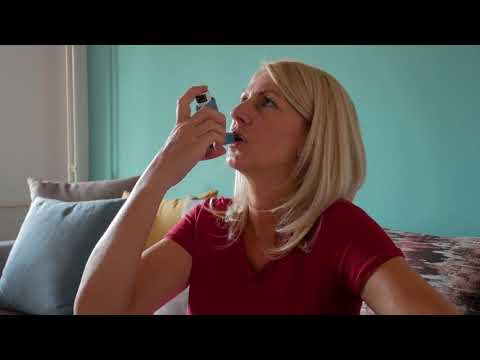My name is Gail Weinmann and I am deputy director of the Division of Lung Diseases at NHLBI. People can live a long time with COPD, many decades actually, so it’s important to understand that there are options to allow those with COPD to live their lives fully. Even though there’s no cure for COPD, these options may slow its progression and manage symptoms. You and your health care provider are in the best position to decide what you need and what is the best course of action for you in particular. Some of the options that are available include medication, physical training or rehabilitation, and of course, general healthy living.
Let’s start with healthy living. If you still smoke, the most important step you can take towards healthy living is to quit. Studies have shown that it’s never too late to quit. This is a good step for you and anyone you know, whether they have COPD or not. It’s not easy to quit and there is no magic bullet. But there are many programs available at the national and local levels to help. Usually, a multi-faceted approach works best. Nicotine replacement therapy or a support group or both may be helpful. If you have COPD, it’s best to avoid lung irritants, like second-hand smoke, dusty environments, and fumes.
It’s probably a good idea to stay indoors on bad pollution days. A healthy, balanced diet helps everyone. Eating the wrong food or too much food or not enough food can all potentially worsen symptoms. Another important step towards healthy living is adequate exercise and strength training. While it can be very hard to remain active, physical activity provides overall conditioning of your heart and muscles and improves your overall endurance. Many report it helps them sleep at night. Another part of healthy living is staying up to date with your vaccinations. You should check with your health care provider what vaccinations are appropriate for you. If you have symptoms of being short of breath, there are some medications that may help. The most commonly used one is lung bronchodilators. These are medications that relax the muscles in your airways and help the air to move in and out of your lungs.
Some patients with COPD may respond well to corticosteroids. These are drugs which work to decrease the inflammation in the airways. For those with very low levels of blood oxygen, a health care provider may prescribe oxygen therapy. A very select group of patients with a certain pattern of COPD may benefit from surgery of the lung. Beyond regular exercise, a coordinated pulmonary rehabilitation program may help. Pulmonary rehabilitation is a prescribed regime that includes an exercise program, disease management, and nutritional and psychological counseling. A team of health care professionals that may include doctors, nurses, physical therapists, respiratory therapists, exercise specialists, and dietitians, work together to create a program that meets your needs. Sometimes a cold, flu, or a lung infection may cause your symptoms to worsen suddenly and you may have a much harder time breathing, feel chest tightness, have more coughing, there could be changes in the color or amount of your sputum or spit, you could even have a fever.
If this happens to you, it’s important to contact a health care provider right away. For more information about COPD, visit COPD.nhlbi.nih.gov. .
As found on Youtube
